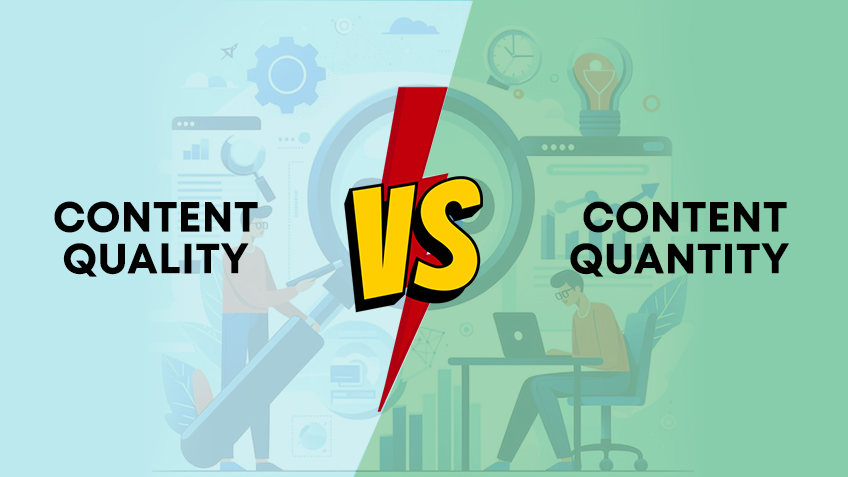When you write content for your website or business, one big question comes up: should you write more blogs or make better blogs? In 2025, both things are important. But if you know how to use both the right way, your website can get better results in Google. Let’s understand this in a simple way.
Content quality means how useful and helpful your blog or article is. Good content should answer people’s questions clearly. It should be real, original, and easy to read. Use simple words, short paragraphs, and clear headings. You can also add expert tips, real-life stories, or trusted sources to make it stronger. This kind of content is more likely to rank higher in search.
Good quality content has many benefits. First, it keeps people on your website longer. If they find the blog useful, they may also check other pages. This helps reduce your bounce rate. Second, it improves conversion. That means people may sign up, download something, or buy your product. Third, it helps build trust. If your blogs are honest and helpful, more people will trust your brand. And lastly, search engines like Google reward useful content with better ranking.
Now let’s talk about content quantity. This means how much content you are posting. If you post regularly, like 2–3 blogs per week, it increases your chances of showing up in search results. More blogs mean more keywords, more topics, and more visibility.
It also helps you target long search phrases, called long-tail keywords. These are specific questions people search, like “best food for senior dogs” or “how to save money in college.” These blogs may not get huge traffic, but they bring the right people to your website. Also, posting different types of content like videos, podcasts, or infographics helps you reach more people with different tastes. And by posting regularly, you can see what topics you missed earlier and fill in the gaps.
So what works best—quality or quantity? The answer is both. You need to balance them.
Start by setting your goal. Do you want more traffic? Then post more blogs. Do you want more trust and sign-ups? Then focus on quality. If you want both, create a plan that includes both high-quality and regular content.
Next, focus on 3–5 main topics related to your business. For example, a fitness blog can focus on workouts, diet, and mental health. This helps you build strong content in one area. Use a content calendar to plan your blogs. This helps you stay consistent without rushing.
You can also save time by reusing old content. Take a blog and turn it into a video or a graphic. Or update old blogs with new tips or data. This way, your content stays fresh without starting from zero.
To know if your content is working, check some numbers. Look at time on page—if people stay longer, they are interested. Look at bounce rate—if it’s low, they are reading more. Check keyword rankings, traffic, and how many pages Google has added from your website. Also check if people are commenting, sharing, or signing up. These all show success.
In simple words, quality brings trust and results. Quantity brings reach and traffic. You need both.
Don’t write blogs just to fill space. Write to help people. Think of your content as a friendly conversation. Answer one question at a time. Give value. Help people solve small problems. That’s the best SEO tip for 2025.
If you're looking for any services regarding Digital Marketing or Website Developement, Please Contact now.






Leave a Comment